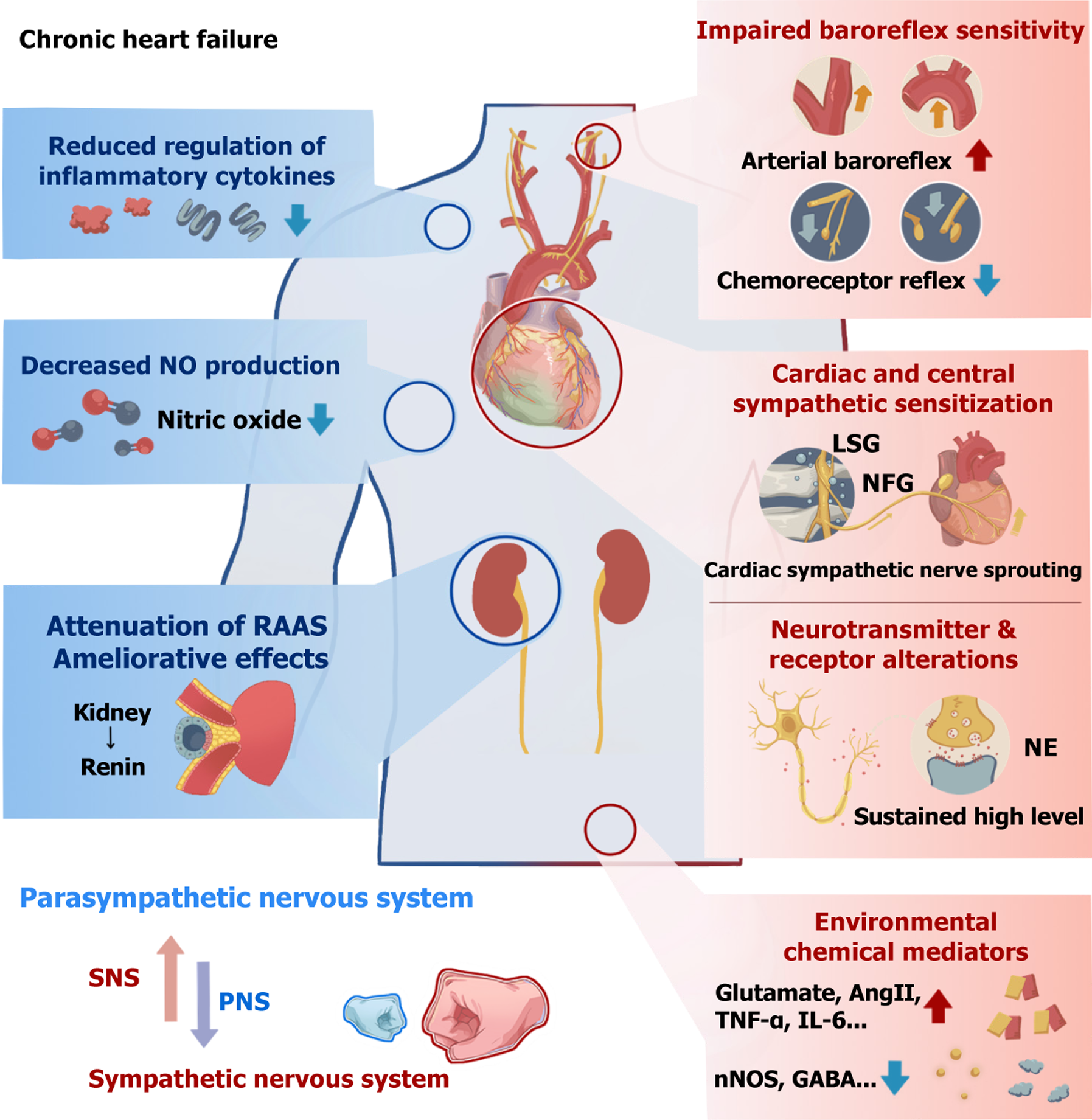Copyright
©The Author(s) 2025.
World J Transplant. Dec 18, 2025; 15(4): 109951
Published online Dec 18, 2025. doi: 10.5500/wjt.v15.i4.109951
Published online Dec 18, 2025. doi: 10.5500/wjt.v15.i4.109951
Figure 1 This infographic illustrates the pathological mechanisms of chronic heart failure.
It shows multiple disrupted physiological processes. Reduced regulation of inflammatory cytokines, decreased nitric oxide production, and attenuation of the renin-angiotensin-aldosterone system ameliorative effects impact cardiac and renal functions. Impaired baroreflex sensitivity involves altered arterial baroreflex and chemoreceptor reflex. Cardiac and central sympathetic sensitization is evident, with cardiac sympathetic nerve sprouting and neurotransmitter/receptor alterations, like sustained high norepinephrine levels. The balance between the parasympathetic and sympathetic nervous systems is disrupted. Also, changes in environmental chemical mediators occur, such as increased alcohol dehydrogenase, glutamate, endothelin, angiotensin II, tumor necrosis factor-α, interleukin-6 and decreased nitric oxide synthase and gamma-aminobutyric acid, etc. These factors collectively contribute to the complex pathophysiology of chronic heart failure, highlighting the systemic and multifactorial nature of the disease. RAAS: Renin-angiotensin-aldosterone system; SNS: Sympathetic nervous system; PNS: Parasympathetic nervous system; TNF-α: Tumor necrosis factor-α; IL-6: Interleukin-6; LSG: Left stellate ganglion; NFG: Nerve growth factor; NE: Norepinephrine; GABA: Gamma-aminobutyric acid; nNOS: Neuronal nitric oxide synthase; Ang II: Angiotensin II.
- Citation: Wu LZ, Huang YN, Chen Y, Ji YQ, Jin YW, Chen CX, Zhuang SY, Xu B, Xia YB, Xu TC. Chronic heart failure and heart transplantation: The relationship between autonomic function and cardiac performance. World J Transplant 2025; 15(4): 109951
- URL: https://www.wjgnet.com/2220-3230/full/v15/i4/109951.htm
- DOI: https://dx.doi.org/10.5500/wjt.v15.i4.109951













